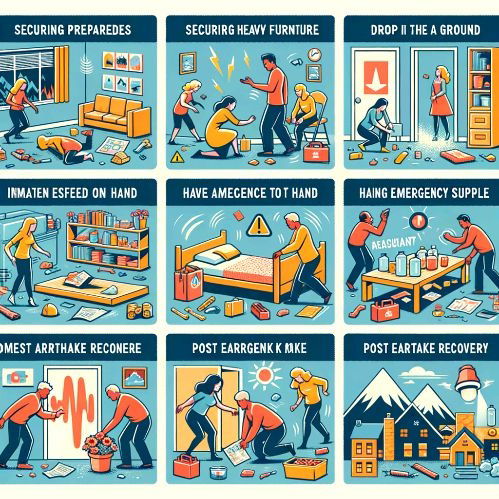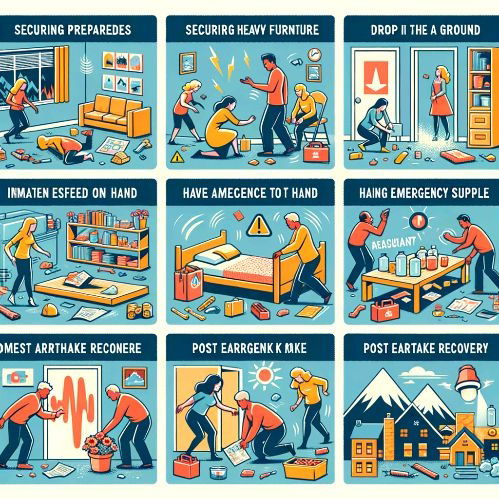Earthquake Safety Information: A Comprehensive Guide

Introduction to Earthquake Preparedness
Understanding and preparing for earthquakes is essential for individuals living in seismically active areas. Earthquakes can strike without warning, causing significant damage to infrastructure, injuries, and fatalities. This guide provides detailed earthquake safety information, offering strategies to mitigate risks before, during, and after an earthquake, aiming to safeguard lives and property.
You may also be interested in: Earthquake Insurance Policies: Protecting Your Home and Peace of Mind, Safety Inspection Services Near You, Driving Safety, Digging into Safety, Safety in El Salvador: Navigating Challenges and Promoting Well-Being, Top 10 Insurance Policies Everyone Should Have, and many more articles here!
Understanding Earthquakes
Causes of Earthquakes: Earthquakes result from the sudden release of energy in the Earth's crust, creating seismic waves. This energy release is often due to tectonic movements, volcanic activity, or man-made explosions.
Seismic Zones: Certain regions are more prone to earthquakes due to their location along tectonic plate boundaries. Identifying if you live in a seismic zone can help you prepare accordingly.
Before an Earthquake: Preparedness Tips
Emergency Kits: Assemble emergency kits containing water, non-perishable food, first-aid supplies, flashlights, batteries, and other essentials.
Home Safety Checks: Secure heavy furniture and appliances to walls, and ensure that shelves and cabinets can lock to prevent contents from falling.
Plan and Practice: Develop an evacuation plan and practice earthquake drills with family members. Know safe spots in each room, such as under sturdy furniture.
During an Earthquake: Safety Measures
Drop, Cover, and Hold On: At the first sign of an earthquake, drop to the ground, take cover under a sturdy table or desk, and hold on until shaking stops.
Stay Indoors: If indoors, stay there. Moving outside can increase the risk of injury from falling debris.
Avoid Windows and Exterior Walls: Stay away from windows, mirrors, and exterior walls to avoid glass and potential structural damage.
After an Earthquake: Recovery and Response
Check for Injuries: Prioritize first aid for injuries. Do not move severely injured individuals unless they are in immediate danger.
Inspect for Damage: When safe, inspect your home for structural damage, gas leaks, and electrical system damage. Use caution to avoid aftershocks.
Communicate and Reconnect: Check on neighbors, especially those who may require additional assistance. Use text messages or social media to communicate with family members to conserve battery life and avoid overwhelming phone networks.
Stay Informed: Follow updates from local authorities and emergency services for information on safety, shelters, and recovery efforts.
Educational Resources and Training
Community Programs: Participate in community earthquake preparedness programs, such as CERT (Community Emergency Response Teams), to receive training in disaster response skills.
Educational Materials: Access materials from reputable sources like the USGS (United States Geological Survey) and FEMA (Federal Emergency Management Agency) for in-depth earthquake safety information.
Conclusion
Preparation and knowledge are key to navigating the challenges posed by earthquakes. By understanding earthquake safety information and implementing preparedness measures, individuals and communities can significantly reduce the impact of seismic events, ensuring a quicker and safer recovery process.
